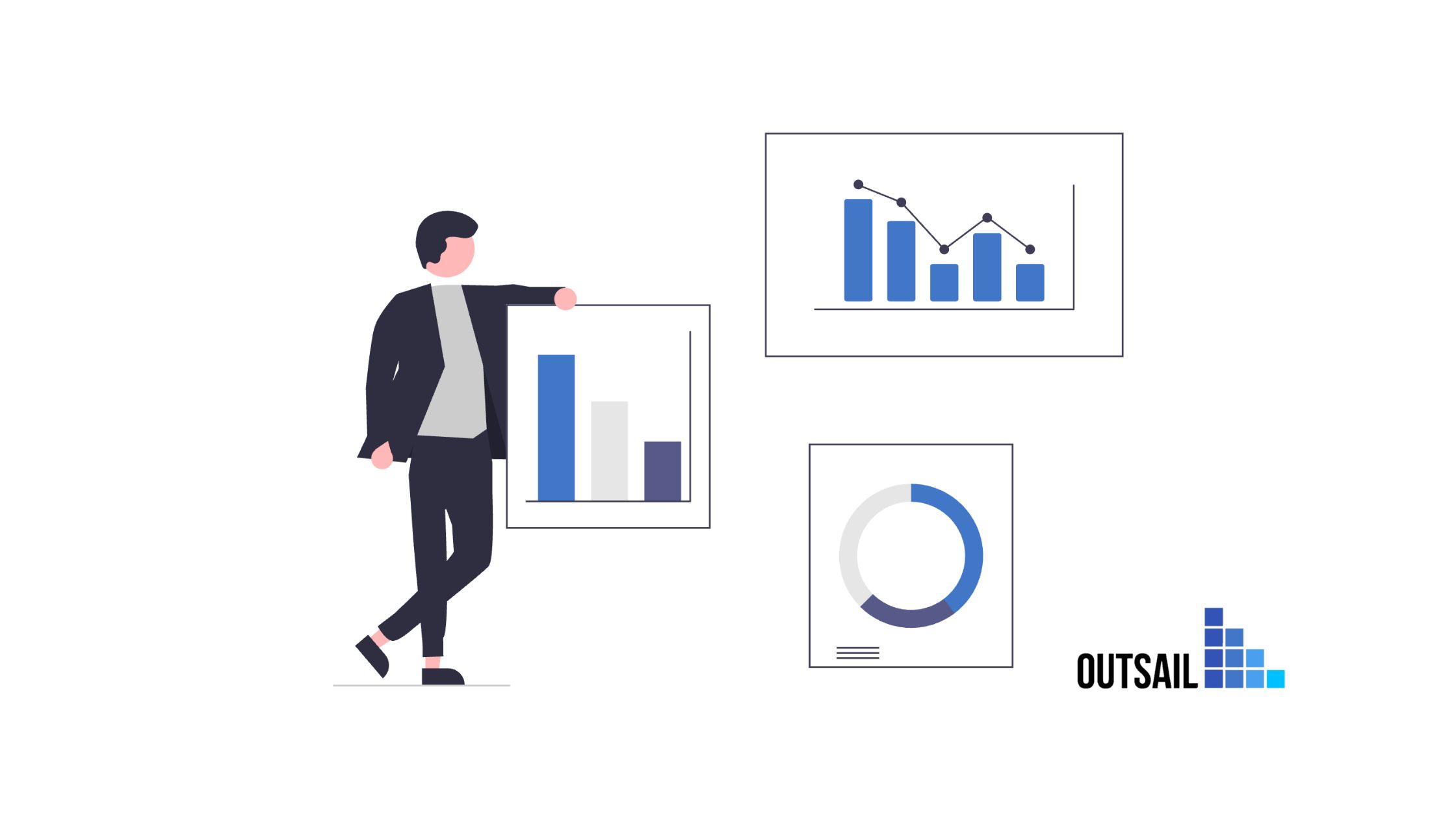Learn why robust HRIS reporting is essential for strategic HR. Discover key features, evaluation tips, and how to turn workforce data into powerful business insights.

HR teams today are drowning in data requests. A staggering 55% of HR professionals face growing demands for data across a broader range of topics. Yet, despite 75% of organizations using multiple HR systems, only 30% manage to turn that data into actionable insights.
This gap isn’t just a technical hiccup—it’s a strategic failure. When people data remains siloed or poorly interpreted, HR’s ability to influence critical business decisions is severely limited.
Your Human Resource Information System (HRIS) isn’t just an operational tool—it’s the connective tissue of your workforce strategy. From onboarding to offboarding, it captures data at every stage of the employee lifecycle. But without robust reporting capabilities, all that valuable data stays locked in black boxes. As a result, HR teams are left reacting rather than leading.
To unlock the full potential of your HRIS, you need a reporting framework that’s not only powerful but also user-friendly, customizable, and scalable to your organization’s needs.
Download our Reporting Evaluation Template to assess your system’s capabilities and make smarter, insight-driven decisions faster.
Organizations operating with limited HRIS reporting capabilities face mounting challenges that directly impact their bottom line. Research from Gartner reveals that HR leaders are finding prioritization increasingly difficult as they struggle to keep up with endless data requests.
This creates a cascading effect of problems:
Modern HRIS platforms should provide executive, operational, and analytical dashboard layers that serve different organizational needs. Executive dashboards focus on high-level KPIs directly linked to business objectives, including revenue per employee, total workforce costs, and performance metrics that correlate with customer satisfaction.
The most effective dashboards offer:
Beyond basic reporting, sophisticated HRIS platforms incorporate predictive analytics that help forecast future workforce needs, identify flight risks among high-performing employees, and predict candidate success rates. These advanced capabilities enable proactive workforce planning rather than reactive problem-solving.
Key analytical features include:
As HR teams face growing regulatory demands, your HRIS must be more than an operational tool—it must serve as a compliance command center. Robust reporting capabilities help protect your organization from legal, financial, and reputational risks by ensuring you meet evolving standards with accuracy and efficiency. Critical compliance features encompass:
Modern HRIS platforms must offer both standardized and customizable reporting options to meet a wide array of regulatory requirements. Pre-built reports ensure organizations can easily comply with common regulations such as EEOC filings, labor law disclosures, and payroll tax reporting. These templates save HR teams significant time and reduce errors by following structured, compliant formats.
However, not all organizations have the same reporting needs. Industry-specific regulations (such as HIPAA in healthcare or SOX in finance) often require tailored data outputs. That’s why it’s equally important for your HRIS to support custom report creation. This flexibility allows HR professionals to modify data fields, apply filters, and schedule automated delivery based on unique compliance demands. Whether you’re preparing for a local labor audit or an internal HR policy review, a configurable reporting engine is critical to remain agile and compliant.
Compliance is only as good as the quality of the data behind it. A robust HRIS should incorporate data governance controls to ensure the integrity, security, and consistency of all employee-related information. This begins with role-based access control, allowing only authorized personnel to view or edit sensitive data, such as compensation or health records.
Additionally, the system should enforce validation rules and standardization protocols to prevent errors like duplicate entries, missing mandatory fields, or inconsistently formatted information. These controls not only improve reporting accuracy but also support compliance with data protection regulations like GDPR and CPRA. Effective governance mechanisms build a strong foundation for accurate reporting and reduce legal risk tied to data mishandling.
To meet compliance obligations and demonstrate transparency, HRIS systems must maintain detailed audit trails. These trails automatically capture and store information on every data access, modification, or deletion within the system. Each entry should include a timestamp, the user involved, the action taken, and the affected data fields.
Audit trails are invaluable during internal reviews or external audits, as they allow organizations to trace how and when specific data was handled. For example, if an employee’s job title or salary was changed, the system should clearly show who made the change, when it was made, and what the previous values were. This level of traceability not only ensures accountability but also helps prove compliance with employment and data privacy laws.
Reactive compliance is risky. That’s why leading HRIS platforms include real-time alert systems and automated compliance monitoring. These tools continuously scan your HR data for anomalies or violations, such as missing I-9 forms, outdated certifications, or unauthorized access attempts.
Alerts notify HR teams immediately, allowing them to take corrective action before issues escalate into formal violations or legal consequences. These systems may also include compliance dashboards that provide visual summaries of risk areas, helping HR professionals prioritize action. Proactive monitoring improves audit readiness and ensures your organization stays ahead of regulatory requirements rather than scrambling to respond.
Together, these four components—pre-built and custom reporting, governance controls, audit trails, and proactive alerts—create a compliance framework that minimizes risk, maximizes transparency, and empowers HR to lead confidently. In a world of increasing data regulation and scrutiny, organizations that invest in these capabilities are better equipped to handle audits, avoid penalties, and demonstrate a mature, well-governed HR function. A compliant HRIS isn’t just a technical advantage—it’s a strategic asset.
Your HRIS reporting capabilities depend entirely on data quality and integration. Organizations should evaluate systems based on their ability to connect disparate HR data sources while maintaining accuracy and consistency.
Data Integration Requirements:
Quality Assurance Features:
The best HRIS platforms provide intuitive report building capabilities that don't require technical expertise. Look for drag-and-drop interfaces that enable HR professionals to create sophisticated analyses without coding knowledge.
Report Building Essentials:
Effective data visualization transforms complex workforce information into compelling business narratives. Your HRIS should offer multiple visualization options including charts, graphs, heat maps, and interactive dashboards that make data accessible to non-technical audiences.
Visualization Best Practices:
Performance analytics should connect employee metrics with broader business outcomes, helping organizations identify correlations between workforce characteristics and performance results. This includes tracking performance trends over time and identifying factors that drive employee success.
Performance Reporting Features:
Comprehensive HRIS reporting should include detailed financial analysis capabilities that help organizations understand the true cost and value of their workforce investments. This encompasses direct costs like salaries and benefits as well as hidden expenses associated with turnover and vacancy periods.
Financial Analytics Components:
Organizations should adopt a systematic evaluation approach that balances current requirements with future growth potential. This includes conducting hands-on testing of reporting features with actual organizational data whenever possible.
Evaluation Criteria:
Even sophisticated reporting capabilities provide limited value without effective user adoption. Organizations should evaluate vendors based on their change management support, training resources, and long-term partnership approach.
Implementation Success Factors:
The investment in robust HRIS reporting capabilities pays dividends through improved decision-making, enhanced compliance management, and demonstrated HR value to organizational leadership. Organizations that prioritize comprehensive reporting functionality position themselves for more effective workforce management and measurable business impact.
To support your evaluation process, consider utilizing structured assessment templates that guide your comparison of different HRIS options. This systematic approach ensures you evaluate all relevant factors and make an informed decision that serves both immediate needs and long-term organizational objectives.
Your HRIS represents the foundation of your workforce data strategy. By demanding robust reporting capabilities, you ensure this foundation supports not just today's operational requirements, but tomorrow's strategic workforce initiatives as well. The question isn't whether you can afford to invest in comprehensive reporting functionality – it's whether you can afford to operate without it.
Ready to evaluate your options? Download our comprehensive HRIS Reporting Evaluation Template to systematically assess vendors and identify the perfect reporting solution for your organization's unique needs.
